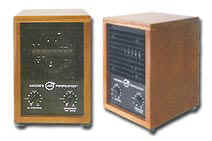Ways
Of Killing Mold, Mildew Spore In Your Home.
The ONLY way
to permanently protect your home from mold, mildew spore infiltration is to control the
environment by keeping the temperature within 65º-70º Fahrenheit and
the relative humidity within 45%-65%. Prevention is the key, but if
you do experience an outbreak, there are means for clean-up and
recovery. Killing mold, mildew spore can be difficult but the only safe and effective
way to keep it from coming back is to modify the environment which
contributed to the development in the first place.
There are a number of
factors which influence growth: environmental humidity and
moisture content of materials, temperature, air circulation, light,
and the chemical composition of potential substrates. Each of these is
discussed here in relation to the environments which will inhibit or
promote growth.
Mold Spore
 |
Do
you suffer from mold, mildew spore problems? Try LightningAir
Products. All generate ozone and helps with these
problems. Order yours today! |
View Our
Entire Products List
Air Drying
Air drying of damp items will inactivate the
mold, mildew spore, though it should be done
in an area that is vented to the outside or isolated, to prevent
spreading.
Ultra-violet
light
U-V light inhibits growth and may
actually kill it. It is
not, however, recommended as a full-scale treatment on books
and papers because the amount of exposure necessary for removing the contaminant
would
induce fading and accelerate aging. However, it has been suggested as
a possible step in treating small, localized outbreaks. Place the book
or document outdoors, fanned open, in the sun, for no longer than 30
minutes. Follow up with cleaning. Do not leave
books and papers outside overnight, as temperature changes may cause
condensation to form. If the book is placed back into a suitable
environment, the combination of removing the visible mold, mildew and allowing
the book to dry out in the sun may halt the further growth and spread. Books should not be placed outdoors if the relative
humidity is above 65%. This process needs careful and continued
monitoring, and may not be feasible for an outbreak affecting a
large quantity of material.
Cleaning the
Storage Area
Begin by vacuuming the area.
Then, shelves, floors, walls, ceilings, and windows should be cleaned
with a mold, mildew spore killing solution, made with bleach. Make sure the area is properly ventilated while cleaning. It may
also be necessary, depending upon how serious the infestation is, to
remove and clean carpets and drapery. Ducts, filters and heat-exchange coils in
HVAC systems should be checked and replaced or cleaned with a cleaner,
as mentioned before. Some type of air purifier should also be
introduced into the area.
Odor removal. Charcoal
and/or baking soda can be used to remove the odors, if the
treatment has not done so. Simply place briquettes and/or bowls of
baking soda in the area to absorb the odor.
Monitoring. Continue
to monitor the area after clean-up
and recovery. Changes in the environment should have been made (either
before or during treatment) to reduce the possibility of future
outbreaks; i.e., humidity and temperature control established, air
circulation improved, leaks fixed or other sources of moisture
removed. Nonetheless, careful watch should be kept over treated
collections to prevent new outbreaks.
FAQ Learn More
Do ozone generators
work? Learn More
View Products
|

